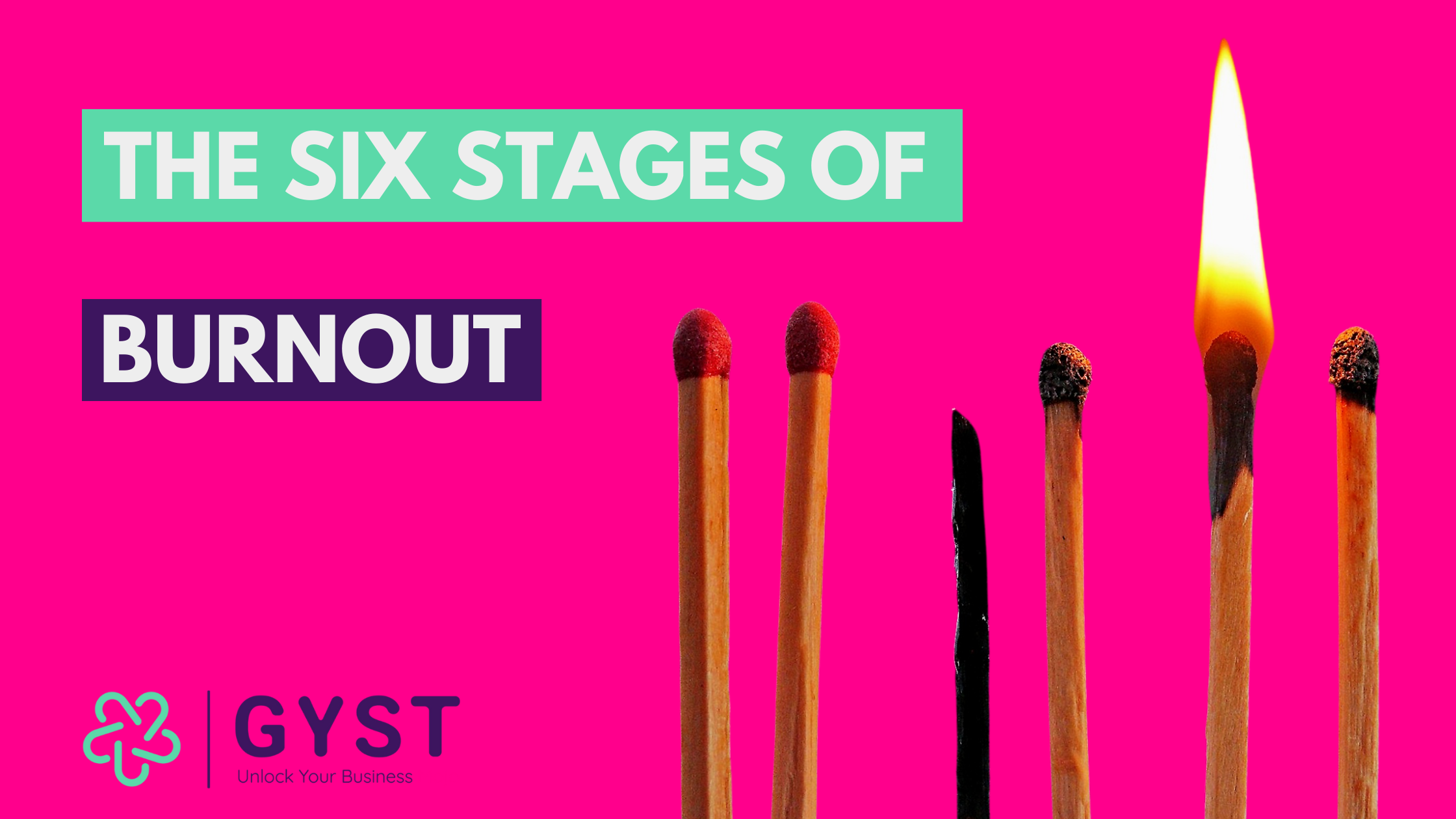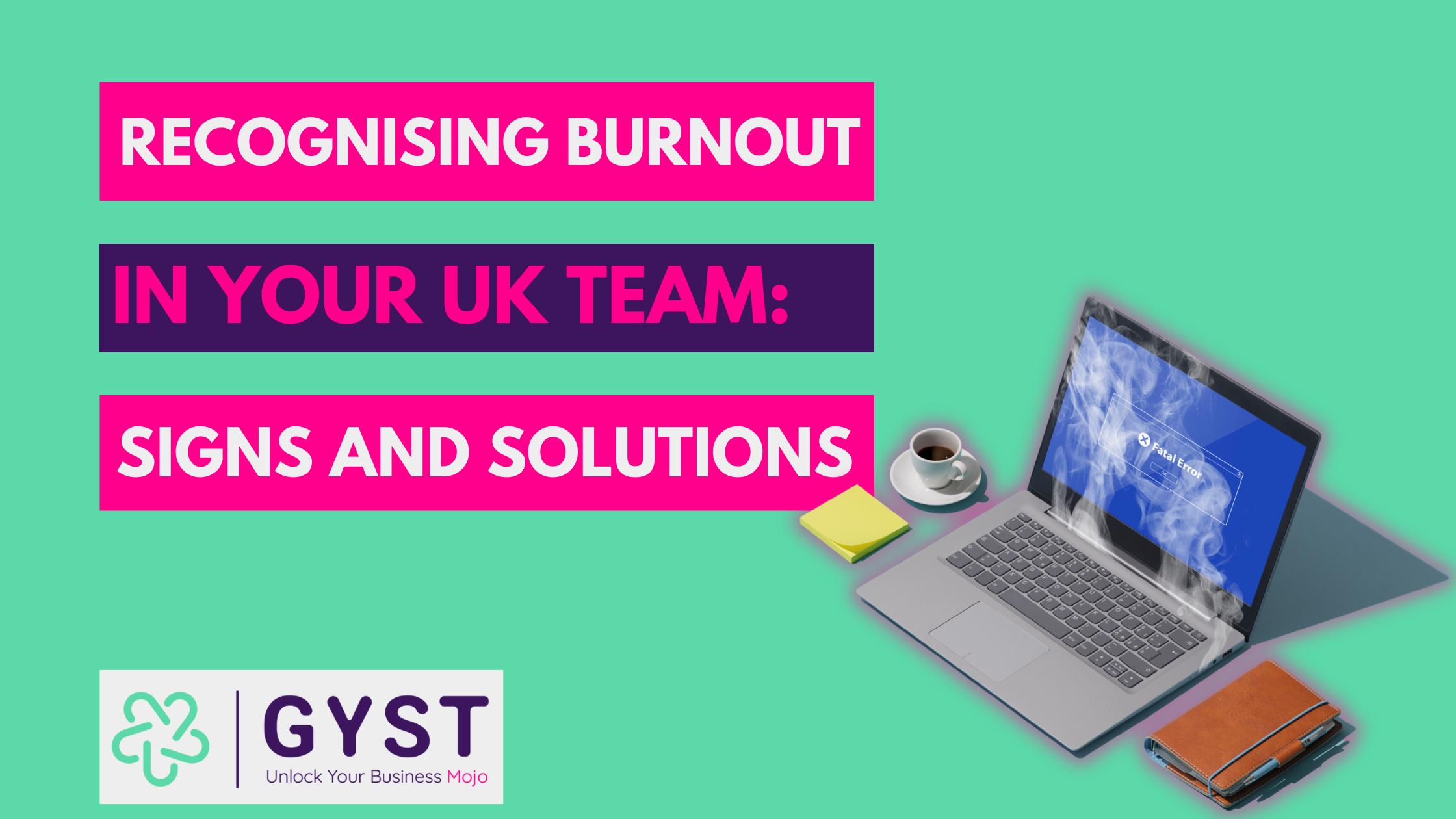There has been a lot of talk about burnout the last few years, but what is it really?
Burnout is taxing physical, mental, and emotional exhaustion stemming from prolonged stress.
Burnout can change everything.
Burnout has a detrimental effect on our bodies digestion system, how we fight off illnesses, our communication with others, and the way we view ourselves.
On top of that, Burnout weakens our cognitive function and is emotionally draining, making it easy for us to either disengage or become increasingly more frustrated.
Burnout is becoming the number one issue to tackle within the workplace.

Before we delve into the stages of Burnout, let’s consider the following: this stress does NOT always present itself negatively. What?!
I know, I know. I’m hearing you now ask yourself “if the stress doesn’t start off as a negative how can it be so detrimental?”
I will absolutely answer this in Stage One Of Burnout.
Before I start, I also wanted to share some really concerning statistics about burnout.
A recent Gallup study found that 76% of full-time employees are feeling burnt out.
That’s A LOT of people.
This is a sharp increase in just 12 months (we were seeing 46% of employees feeling burnt out in 2023).
Stress and burnout are slowly becoming an epidemic themselves. Is anyone else a little bothered by that?
Not only that, but feeling burnt out also leads to:
-
- A 63% increase in the likelihood of taking a sick day.
-
- 2.6 times more likely to resign.
-
- 23% more likely to visit the Emergency Room.
- 23% more likely to visit the Emergency Room.
That is quite unsettling, not only for the people who are suffering, but also for companies.
A lot of employees who end up burnt out are top performers, high achievers and highly motivated.
Losing a good employee to burnout is preventable.
We need to understand the stages of burnout.
Burnout is something that can and does creep up on you; there are warning signs.
The sooner you recognise those warning signs and understand the stages, it will become a lot easier to prevent them.
Let’s get started.
Stage One of Burnout: Excitement.

Yes, you read that correctly.
A lot of the time burnout can start with excitement and optimism. It could be due to a new job, goal, target, or even an exciting life event.
This excitement and optimism make it easier to concentrate, there’s an increase in energy, productivity and output.
-
- 16-hour days? No problems at this stage!
-
- Working overtime? It’s a breeze.
-
- Getting up after 4 hours of sleep still motivated? Absolutely!
-
- Feeling like a superhero? Most definitely.
-
- Not taking care of yourself? This is for certain. However, you still feel great. It’s as if nothing can get in your way.
This is what I call the “I’m getting addicted to adrenaline” phase, which is really difficult to break.
Not only that, but many people also get positive feedback in this stage and start associating certain behaviours with success; these behaviours are usually not sustainable.
Stage Two of Burnout: Work Harder!

This is when small cracks begin to show. The initial energy is starting to wear off.
You’re tired.
It’s taking more cognitive energy to complete the same tasks.
But nothing a little caffeine can’t fix…
The dilemma at this stage is you have associated unsustainable behaviours (sacrificing your sleep, not exercising, working long days, etc) with success.
Instead of taking this as a warning sign, you keep pushing through. Fighting to get back to Stage One.
I’ve seen this time and time again. Instead of seeing this as a sign to rest, people push through.
Stage Three of Burnout: Frustration

You have been fighting a losing battle. You have tried incredibly hard to get that initial energy and euphoria back, to no luck.
At this stage, you are becoming increasingly more frustrated, fatigued, and forgetful.
Maybe you’ve gone from being cool, calm and collected to being outwardly frustrated (or even angry). It’s as if the slightest thing can irritate you.
Or maybe, you’ve gone from being outgoing, bubbly and engaged to becoming more and more withdrawn at work and at home.
What else is happening at this stage is, that your concentration has declined, you’re starting to make more mistakes and your performance is declining.
All of this will leave you feeling impatient and anxious.
Stage Four of Burnout: Illness and anxiety.

Prolonged stress (the precursor to burnout) has a profound impact on your health.
Your body is screaming at you to slow down but you’re still trying to push through.
Stress will directly:
-
- Lower immunity
-
- Cause inflammation
-
- Impact your digestive system
I have seen a lot of health issues that have arisen from burnout including IBS, intolerances, allergies poor digestion and severe inflammation. Not to mention an increase in the frequency and severity of viruses. However, that’s just the physical side.
Anxiety is also a symptom of stage 4 burnout.
You’re physical, mental and emotional well-being are overwhelmed and you can only take so much.
Being under stress for prolonged periods leads to anxiety. This is extremely taxing for any individual.
Additionally, a lot of people at this stage also suffer from denial that they’re not coping so the easiest thing to do is just push on.
Stage Five of Burnout: Lack of Drive and Apathy.

That original drive and motivation you started with are nowhere to be found.
Apathy is one of the last stages of burnout and it impacts you greatly.
At this stage, you can barely recognise yourself.
And here’s the thing, it’s not that you don’t care, it’s that you no longer have the capacity to care.
It’s as if you’ve become so overwhelmed that your brain and body just shut down.
Stage Six of Burnout: Burnout Has Me Now.

You are completely and utterly mentally, physically, and emotionally exhausted.
This is the stage where people quit jobs or get signed off.
Whether it’s from being overwhelmed or not physically being able to do the job. Either way, this is when people are forced to slow down or stop because of burnout.
You might not be able to cope with simple pressures around you. It’s as if everything is too much.
Burnout can completely change the way you work, think and feel.
The hardest part about burnout is seeing warning signs and not doing anything about it.
What to do now?
Take the warning signs seriously. Our bodies are AMAZING at telling us what we need. All we have to do is listen.
If you are feeling tired, REST.
If you are starting to suffer from digestive issues, SLOW DOWN.
If you need help, ASK.
All of those things are simple.
For companies, become aware of the signs of burnout within your team.
This can look like:
- Changes in performance.
- Changes in behaviour (withdrawn or showing more aggression).
- Changes in appearance.

Understand the stages and look at encouraging your employees to rest, encouraging them to switch off.
If you or your company lack the resources or education, bring in specialist or professional to help with workplace wellbeing.
Educating yourself on how stress and anxiety can directly impact physical health is beneficial.
One of the key areas that are needed right now is understanding what an organisation can do for their employees.
Understanding what small changes you can make within your company to have a big impact on your staff is important.
If you’re not sure if you’re burnt out and want to know, get your burnout score here if you’re a leader, or if you can get your employees to get theirs here.
If you’re interested in bringing GYST into your workplace, check out our training courses Stress Management Courses For Leaders and High-Performer and Sales Stress Management Training.



